A New San Francisco Show Looks at the Light of Summer and the ‘Pleasure of Being Alone at the Right Moment’
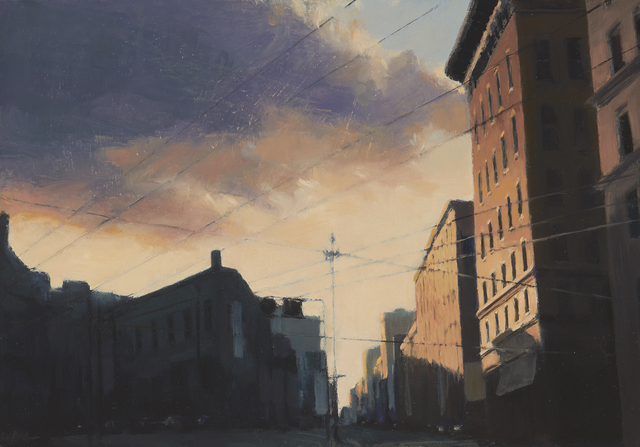

Katie White

As city dwellers are well aware, summers are meant for escaping the urban infernos they call home for just about anywhere else—especially if that destination is even vaguely pastoral or near a body of water that isn’t polluted to toxic levels. Meanwhile, the cities transform into ghost towns during these weekends, like parallel universes to their more bucolic counterparts.
Capturing the essence of this seasonal symbiosis is “Jeff Bellerose: Cities & Interiors,” a quiet and at times nostalgic exhibition on view at Paul Thiebaud Gallery in San Francisco.
Many of the works on view here depict, with painterly effect, rooms from two homes intimately known to the artist: his parents’ house in Mansfield, Massachusetts, and a cottage in Martha’s Vineyard that the family has visited each summer since 1973, the year the artist was born. These scenes are conspicuously empty of people. Yet one has the sense that someone has just left the room: a door is left ajar, a pillow rests on the bed slightly askew. In his rooms, the shades are drawn against the sun and, though we never see the ocean, there is the sense in diffusion of light and shadow.

Jeff Bellerose, Rooms (2018). Courtesy of Paul Thiebaud Gallery.
The works of Edward Hopper come to mind, in both the quality of the light and in the sense of loneliness. While Bellerose counts the artist among his influences, he makes an interesting distinction to Hopper’s more tragic sense of isolation, saying, “I am more intrigued by elements of a quiet stillness—a solitude and timelessness in the light and spaces—in a good sense as a strong enriching sense of solitude, the pleasure of being alone at the right moment.”
This stillness is true of his city scenes as well, and are empty of people too. In these, Bellerose captures the shadow-cast streets under train tracks and elevated highways, the views from fire escapes, and blurred from bridges. Here, one senses the emptiness of his people-less cities. Rather than the intimacy of the interior series, the city scenes are broad, almost wide-angles views full of latent abstractions of architecture of the built environment.
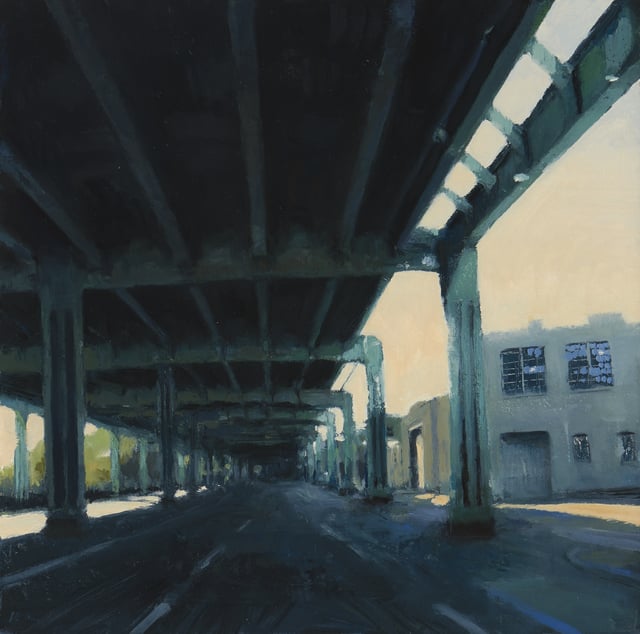
Jeff Bellerose, Edge (2017). Courtesy of Paul Thiebaud Gallery.
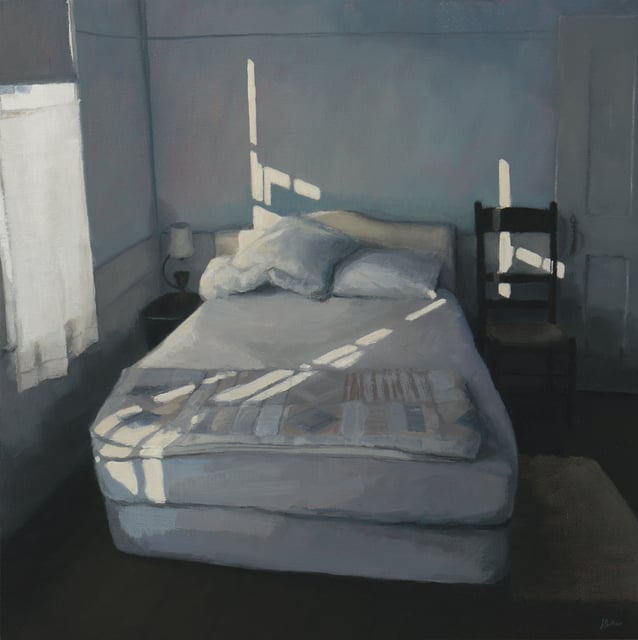
Jeff Bellerose, Rest (2018). Courtesy of Paul Thiebaud Gallery.
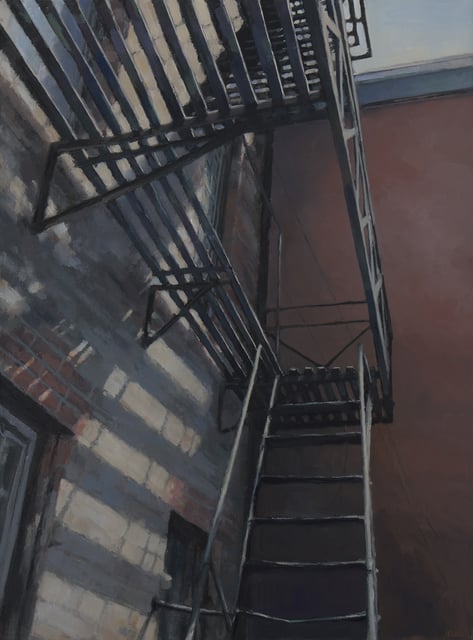
Jeff Bellerose, Landing (2018).Courtesy of Paul Thiebaud Gallery.
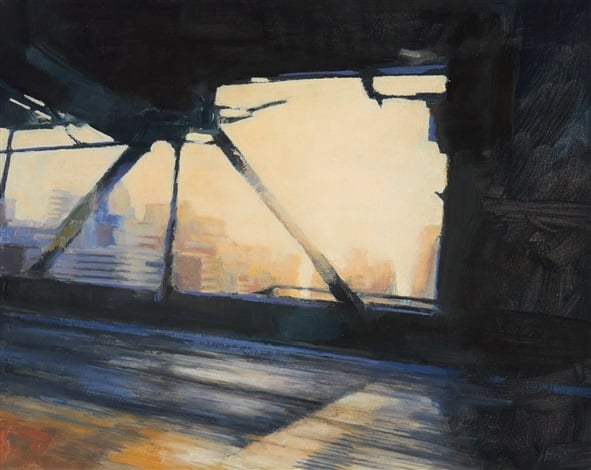
Jeff Bellerose, In Motion (2017). Courtesy of Paul Thiebaud Gallery.
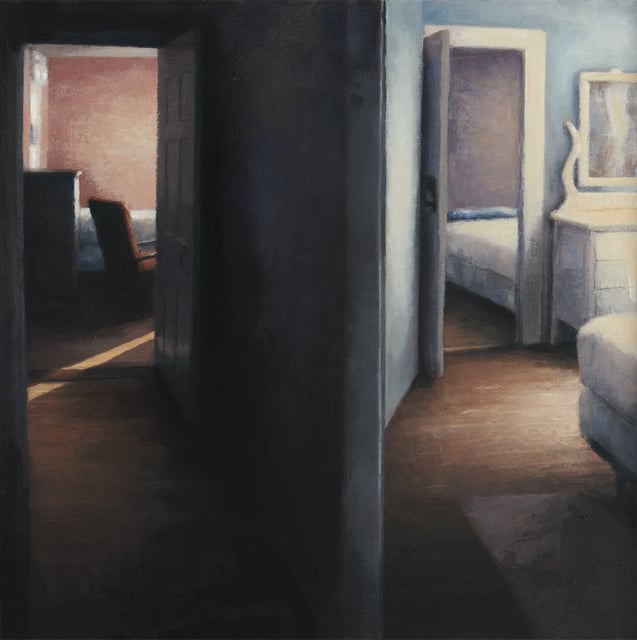
Jeff Bellerose, In Motion (2017). Courtesy of Paul Thiebaud Gallery.
